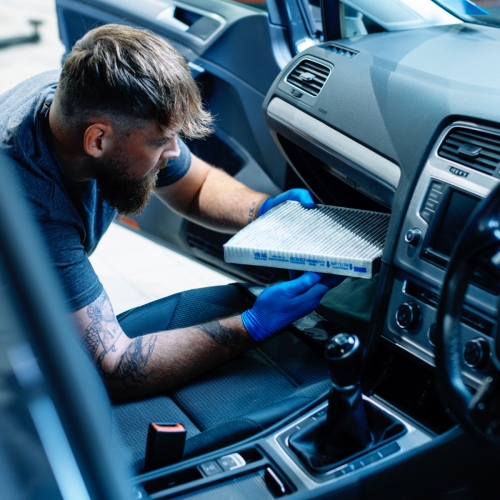In May 2018 stricter new MOT rules were introduced to help better identify the roadworthiness of cars in the UK. Curtis Hutchinson reports on how the rules have bedded in as testers prepare for a large influx of three year old cars over the course of 2019.
Last May saw the biggest shake-up to the MOT system in decades as the Driver & Vehicle Standards Agency (DVSA) introduced tougher new regulations governing the minimum safety, roadworthiness and emissions requirements for vehicles aged over three years old.
The changes saw MOT testers apply a comprehensive new set of criteria to cars undergoing their annual test with new minor, major and dangerous defect categories replacing the simple pass or fail notices issued under the old system.
Major and dangerous faults identify safety issues resulting in automatic test failures with dangerous faults rendering vehicles no longer road legal and owners facing a £2,500 fine, ban or three points on their licence if they continue to drive them.
Cars found to have major faults can still be driven if roadworthy and if the MOT is still valid but owners are advised that repairs need to be undertaken as soon as possible.
>Minor faults cover defective components, while advisory notices continue to indicate components that are either wearing or on their way out.
Stricter rules on diesel car emissions were also introduced with vehicles tested to the manufacturer’s plate value. If the plate value is not present then testers follow default levels set for older cars, while a new default level has been set for all cars first used since 1 January 2014.
Major faults are given to cars with “smoke, of any colour coming from the exhaust” or if testers find evidence of diesel Particulate Filters (DPFs) having been tampered with.
New items were also added to the MOT check list including underinflated tyres, contaminated brake fluid, illuminated brake pad warning lights and fluid leaks.
Additionally vehicles registered from 1 September 2009 now have their reversing lights and headlight washers checked. And from 2021 the daytime running lights on vehicles registered from 1 March 2018 will also be checked.
With a bumper crop of 2.7 million cars first registered in the record breaking year of 2016 due their first MOT this year, how have the new regulations bedded in?
According to Stuart James, Director of the Independent Garages Association, MOT testing stations across the UK adapted well to the introduction of the new rules and continue to play a crucial role in explaining the changes to customers, many of whom are unaware of the new regime.
“Garages embraced the changes as they are resilient and adaptable, you have to be in the motor trade!
“We have the best MOT testing in the world with a road safety record second to none”
“The new categorisations are welcome as they clearly identify the high levels of dangerous faults which in many cases are the result of owners not regularly servicing their cars.
“We believe annual testing after a car’s third year, using these new criteria, once again demonstrates that we have the best MOT testing in the world with a road safety record second to none,” he said.
James also said garages have responded well to being placed in the invidious position of breaking bad news to customers after detecting dangerous faults rendering their cars unsafe and illegal to drive.
“Garages have risen to the challenge and will advise customers not to drive away cars with dangerous faults and will assist them in getting their vehicles moved elsewhere to be repaired if necessary,” said James.
The DVSA confirmed that 1.13 million cars registered to drive on UK roads failed their MOT during the first six months of the new testing regime through defects classed as dangerous, almost a third (32%) of all failures.
Also the number of cars failing emissions tests more than doubled during the first six months of the new MOT test.
According to the agency the total number of vehicles undergoing an MOT during this period was almost 16 million. Of those 744,592 cars failed their emissions tests, compared with 350,472 during the same period in 2017.
The DVSA’s figures show how petrol-engined cars continue to fare worse year-on-year in unit numbers, although the rate of increase for diesels was much higher at 312%, compared with 73% for petrol.
However, despite the significant growth in emissions test failures, overall MOT failure rates under the new regime have remained broadly in line with 2017. Almost 35% of petrol MOT tests resulted in a failure and just over 33% of diesels failed.
With the new rules approaching their first anniversary and testers working through the influx of 16- and 66-plate cars, comes news that a further change to the MOT system could be afoot.
As reported in Auto Express, the DVSA plans to work with the Department of Transport to see if the MOT system could be expanded further to address the 2.39 million cars in the UK that are subject to an outstanding safety recall.
If the policy makers decide to go down this route then further major changes will be required but in the meantime it’s a matter of business as usual for testing stations.
Dangerous
A direct and immediate risk to road safety or has a serious impact on the environment.
Do not drive the vehicle until it’s been repaired.
Major
It may affect the vehicle’s safety, put other road users at risk or have an impact on the environment.
Repair it immediately.
Minor
No significant effect on the safety of the vehicle or impact on the environment.
Repair as soon as possible.
Advisory
It could become more serious in the future.
Monitor and repair it if necessary.




